#23 July 1903
Explore tagged Tumblr posts
Text






















The Ford Motor Company sold its first car on July 23, 1903.
#Ford Fairlane#Ford Mustang#Torrington#Wyoming#USA#travel#original photography#vacation#tourist attraction#landmark#architecture#cityscape#Ford Expedition#Torrington Cruise Night#Ford Explorer#Ford Escape#Canada#rental car#landscape#Ford Motor Company#first car#23 July 1903#anniversary#US history#technology#engineering#Teslin
6 notes
·
View notes
Text
On July 23, 1903, Ford Motor Company (according to their website as a few sources had conflicting dates) sold its first automobile. It was a Model A for $850.
For today, Howard letterpress printed an image from an electrotype of an automobile, but it is not Ford’s Model A. We don’t have many automobile cuts to choose from in our print shop exhibit though! This is one of our newest cuts from Stephanie in Georgia and recently delivered by one of our local followers, David. This cut is very under Type High so the stack of paper underneath helps bring the cut to 0.918 of an inch. This was printed with black rubber base ink using our Washington hand press.
102 notes
·
View notes
Note
hebert had a wife and daughter?
Indeed he had!
Hébert’s wife’s name was Marie Marguerite Françoise Goupil. I haven’t found better information regarding her birth more than that it happened in Paris in ”the first days of 1756” (she was in other words one year older than her future husband). I also haven’t found out which of her three names was her first name, though all texts I’ve checked settle on Françoise, so I’m also going to call her that.
Françoise, according to Paris révolutionnaire: vieilles maisons, Vieux papiers (1903) was the only child of Jacques Goupil and his second wife Marie-Louise Morel. The former had been the owner of a not very successful lingerie business which his wife then took over after his death. When Marie-Louise died as well, on July 16 1781, she had for a while lived with and worked as a nurse for the abbot Vaudair, who it is possible her daughter then turned to when she a while later started working for religion. Françoise became a nun of the Couvent des Filles de la Conception on rue Saint-Honoré, the same convent where Élisabeth Duplay claimed she and her three sisters took their first communion.
In June 1790, municipal commissioners presented themselves at the convent to hear its inhabitants’ declaration on whether they would stay there or leave. Out of the 24 nuns, only Françoise responded that ”she could not make up her mind at the moment,” the other 23 declaring that ”faithful to their wishes, they wanted to live and die in their state as nuns.” A year later, July 1 1791, Françoise’s name no longer featured among the convent’s inhabitants, meaning she had left it, be that out of free will or her sisters kicking her out for what she had said the previous year.
Hébert’s fellow journalist Louis Marie Prudhomme claimed in his l’Histoire générale et impartiale des erreurs, des fautes et des crimes commis pendant la Révolution (1797) that it was while at La Société Fraternelle des Patriotes de l'un et l'autre sexe Françoise for the first time met her future husband. Their wedding was held in the parish of Saint-Gervais on February 7 1792 (see the image below). After the marriage, the couple settled on Rue Saint-Antoine.
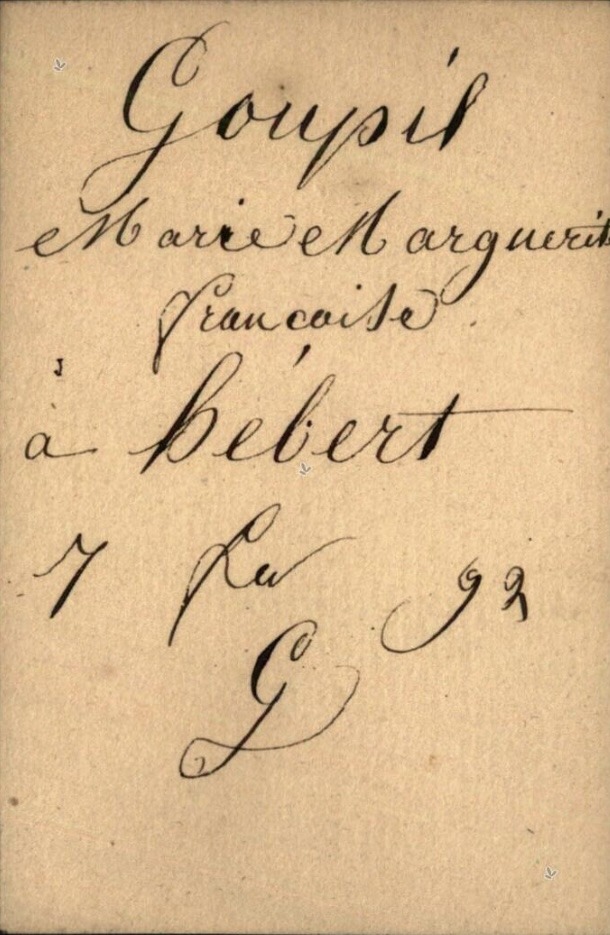
According to the same Prudhomme, Hébert was however not heads over heels in love with his wife:
[Hébert] married more to appear to have carried out an act of good citizenship than out of esteem and love for his wife. Nevertheless, they got along quite well, although she was ugly. It was a large spider that came out of the convent of the Assumption or the Annunciation. […] A wonderful revolutionary frenzy took hold of the couple, and they were faced with the people, who shouted bravo!
Hébert’s own letters would however appear to contradict this:
My situation, although difficult given the immensity of occupations with which I am responsible, becomes happier every day. I must inform you, my good friends, of the alliance that I am contracting with a very amiable young lady of excellent character. It would be enough of these advantages and were she devoid of all resources, the one I love would not be any less dear to me; but to fill my happiness I find enough fortune with my wife to be reassured about her fate if death separates us. I therefore ask you, my dear sister, to give me your approval and to ask the same from Boissierre. […] I am very assured that you will sympathize with my lovable pretender. She is very spiritual. Speaking in the old style I would say that she is comme il faut, but as I have been assured that you are as patriotic as me I only use constitutional expressions. This demoiselle is called Goupil: she has spent her entire life in the convent up until now. By her personal qualities and by the advantages she enjoys she could claim to someone much richer than me; but my good fortune gave me preference over several competitors. You see, my good friend, that not everything in life is bad and that fate has finally tired of persecuting me and through consistency I have been able to create a pleasant and lucrative position for myself. Hébert in an undated letter to his sister, written somewhere in 1791
I am healthy and very happy. United with a woman who combines all the good qualities with the charms of the mind, whose education is completed, whose character is perfect, I lead the sweetest and most peaceful life. Hébert in an undated letter to his sister, written somewhere in 1792
Réné Desgenettes, who in his memoirs claimed to have met Hébert in late 1791 (though it was most likely early 1792) also hints at a loving relationship:
After my return to Paris, by the end of 1791, I had met at la Grave, or rather under the Saint-Jean arch, my fellow patriot and almost fellow student Hébert, who showed me with satisfaction his feelings over seeing me again, how much he had often regretted that I had been absent from the capital during the first days of the revolution. ”You would have surely played an important role,” he told me, ”but now that you’re here everything is almost over. I live pretty close to this place, rue Saint-Antoine, opposite the passage of this name, which leads to rue du Roi des Deux-Siciles. My little apartment is on the third floor at the front. I have not at all forgotten your constant kindness or what I owe you. I want to speak of money so generously lent, because I would not dare to recall and could not count how much you often gave me at the traitors of the rue de la Parcheminerie, de Mâcon and de la Grille du Carrousel. Without you and the honest patriots from rue des Noyers, I would have starved to death… I can’t say, monsieur, which hours I will be at home, where I still dine everyday, and where I would consider myself both happy and honored to find you. But you will be sure to always find my wife there, because I’m married. Madame Hébert is a former nun from Conception-Saint-Honoré, young and very spiritual. Despite her burning patriotism, she has kept a lot of piety, and considering I love her so much, I never contradict her on this point, contenting myself with a few jokes.” I never answered to this invitation, nor did I find the occasion to see Hébert again after the end of 1791.
From the summer of 1792, we have two letters Françoise wrote to her husband’s sister, which they too seem to indicate a happy marriage:
To mademoiselle Hébert the older in Alençon Paris, 24 July 92 We were firmly convinced, my husband and I, that you received the newspaper as well as Mr. Desnos. M. Hébert had taken all the necessary means for this; but we had the misfortune of associating ourselves with the biggest rascal in Paris, who deceives us in every way. It is therefore not surprising that you were deprived of the papers he was responsible for sending you. We are ready to leave him and you will receive what you want without fail, I hope. We would already be on top of our affairs without this man, hardly worthy of a partner as upright as my husband, who has been fooled ever since he started working; but whose well-known probity and frankness made an infinitely honest young man desire his association. So we will work through new charges and I hope that this time we will not be unsuccessful. If M. Hébert is good enough to make his happiness consist in having me, it is indeed me, mademoiselle, who without grace can certify that I am perfectly happy with he who never ceases to everyday give me new proofs of his tenderness. I have carried a precious token of him in my belly for three months now, he wants the child to look like me, and I want it to look like its father, this, mademoiselle, is the continual subject of our differences. We agree more willingly on the desire to have you as a witness of our love, it will not be up to us unless it happens soon. You are very worried about the dangers of the fatherland. They are imminent, we cannot hide them: we are betrayed by the court, by the leaders of the armies, by a large part of the members of the assembly; many people despair; but I am far from doing so, the people are the only ones who made the revolution. It alone will support her because it alone is worthy of it. There are still incorruptible members in the assembly, who will not fear to tell it that its salvation is in their hands, then the people, so great, will still be so in their just revenge, the longer they delay in striking the more it learns to know its enemies and their number, the more, according to me, its blows will only strike with certainty and only fall on the guilty, do not be worried about the fate of my worthy husband. He and I would be sorry if the people were enslaved to survive the liberty of their fatherland, I would be inconsolable if the child I am carrying only saw the light of day with the eyes of a slave, then I would prefer to see it perish with me. I gave Mde Pelletier the papers for you that I haven't through up much since M. Desnos left. I have the most ardent desire to see you. Mademoiselle and dear sister Your very humble servant Goupil… Hébert My husband tenderly embraces you as well as your sister, whom I beg you to accept the assurance of my very sincere feelings.
To Mademoiselle Hébert the older. Rue de la Mairie, Alençon, département de l'Orne. Mademoiselle and dear sister-in-law, I don't know what to attribute your long silence since last time I had the pleasure of writing to you; but it surprises and distresses me, I would have already complained if my since five months back very bad health would have left me that possibility. My husband, who was chosen by his section to serve as city commissioner on the night between August 9 and 10, has run the greatest of risks. He had the pleasure of rendering services to his fatherland, and always with that noble disinterestedness that you know from him. He has done and still does good without respite, he has seen and still sees intrigue rise up, and modestly remains Père Duchesne, a poor newspaper seller. He stood for election and was undoubtedly well worthy of becoming a member of the Convention; but he believed he had to hide nothing of the truth, more than once he made the intriguer who enjoyed a great reputation turn pale, he seemed too pure and too formidable to those who had influence in the nominations, and to the great astonishment of the brave sans-culottes, he himself is still a brave sans-culotte, which is enough for my happiness. Satisfied to know my husband was worthy and capable of doing anything to be satisfied, his hands remained pure like his soul and were not soaked in the blood that flowed in the prisons. For my part, I suffered from such a great horror that I almost lost my life; I believe that the law alone can strike down the guilty, and until then I will cover them with my body. All that can console me in this tragic event is that the names of those who are its authors are already in execration and that history by transmitting them to posterity will justify the people of Paris who has lost nothing (it must be said) of its urbanity. You would oblige me infinitely if you could tell me if the former Viscount the huntsman Lord of Carrouge has emigrated. I suspect that he has and if I was certain of it I would put an opposition against his property as he owes le 600 livres. My husband, who loves you very tenderly, says a thousand tender things to you and to your sister, and I ask you to believe me, both of you, with a very sincere attachment. Mademoiselle and dear sister-in-law . Your very humble, . Servant G... HÉBERT. My address from now on will be: Cour des Miracles rue de Bourbon Ville Neuve.
A few months later, Réné Desgenettes claimed to have run into Hébert and been invited to dinner yet again, and this time he did follow through with it, resulting in this very long anecdote:
On February 24 1793, I spotted him, on rue Saint-Honoré, part of the procession bringing the remains of Pelletier de St-Fargeau to the Panthéon. […] Hébert, who had noticed me as well, dispatched himself from the group, approached me, shook my hand roughly and said: ”Where in the devil’s name do you live?”
”Rue du Paradis au Marais, n. 3.”
”I have important things to tell you and still live on rue St-Antoine.”
I still refrained from visiting Hébert. However, after a very few days, I learned that a gentleman of fairly good appearance, well dressed and calling himself substitute deputy of the Commune, had come to ask for me, and that he seemed upset for not having met me. Thinking there was no way to back down, the next day, around five o’clock, I went home to Hébert, where I found his wife, the former sister Goupille [sic], who, while waiting for her husband, occupied herself with preparing a rather delicate dinner, because the orator loved good food. Madame Hébert received me very well and told me her husband so many times had spoken of me with affection, that we were two old acquaintances. I approached to contemplate an engraving based on the beautiful painting by Titian or Paul Veronese, showing Jesus Christ with two of his disciples at Emmaüs’, when I noticed that Hébert below it had written: the sans-culotte Jesus dining with two of his disciples in the castle of a ci-devant…
”Here you see,” Madame Hébert told me, ”one of these bad jokes my husband often allows himself to make against religion, as a result of a detestable habit I have no hopes of curling him from... I am, monsieur, very much attached to Christianity… It’s our religion at its most beautiful, because I don’t subscribe to everything… I preach to the Jacobins, in the society of our sisters, the same doctrine that abbot Fauchet preach to our brothers at their reunions. He is a great and true apostle who inspired me with a perception of the enthusiasm which animates him, and I have reason to believe that he is also not dissatisfied with the zeal with which I seek to imitate him. I know all the advantages that the Bishop of Calvados has for me; he owes them to nature and to his superior talents, because he is a very handsome man, and everyone agrees that he is also very eloquent.”
Hébert arrived at six o’clock. Before sitting down at the table, where we then stayed for three hours, he took from a secretary a certain number of gold francs, which he handed over to me like an old debt with a thousand thanks. […]
Let us [said Hébert] speak a bit about Alençon and the first time of our youth. Madame Hébert will see that I have hidden nothing from her about the time of my life when it has been claimed that I was a scoundrel. You surely remember, monsieur, that upon leaving college, where I quite simply had the well-deserved reputation of being lazy and mischievous, I had the misfortune, or perhaps the good fortune, to fall out with la justice?
R.D.G: I remember it well.
Madame Hébert: But that is always very grave.
Hébert: This was also very grave, because the bailiwick of Alençon condemned me to banishment; but I appealed to the parliament of Rouen, which did not confirm the sentence of the first judges.
Madame Hébert: I’ve only ever known of this in a rough and very imperfect way.
Hébert: Well, you will know, my good friend, that in the town where monsieur and I were born, women have always had a great reputation for gallantry. Now the widow of an apothecary, who had been accused of bigamy, had in turn many lovers. In the front line there was a doctor who was very handsome, and after him, living under the same roof as the lady, was her premier garçon, as they expressed it then, and then finally the man who managed the very busy pharmacy. A rivalry which existed secretly between the doctor and the pharmasist broke out one day with so much fury that the doctor murdered his rival...
Madame Hébert: The horror! How did he kill him?
Hébert: The doctor took an iron or copper pestle, and delivered several strong blows to the head and across the face of my poor friend L..., who was on the point of being trepanned. However, even before public rumor got around, the king's prosecutor was seized as suspect in this criminal matter, it was dormant or rather stifled by a transaction which was attributed throughout the city to the conciliatory spirit of M. Desgenettes, your respectable father. Doctor Cl.... however, had aggravated his crime, because he was closely pursued, it is true, sword in hand, by the brother of L..., employed on the farms, he had tried twice to kill him. Outraged with rage upon learning that just revenge was going to elude the L... brothers and their friends, I drew up a note which was posted at the doors of the main church, the commissary, the courts and other places.
Madame Hébert: What did it say on the note?
Hébert: It said: ”Sentence rendered to the Supreme Court of Honor which condemns Doctor Cl... to the pillory of infamy, for compensation, etc. Then I drew two bloody knives in a saltire, with this motto: Olim veneno, nunc cultro.”
Madame Hébert: Which means?
Hébert: Formerly with the poison, now with the knife.
Madame Hébert: Is that right, M. Desgenettes?
R.D.G: Yes, madame, and if you want a different version: ”He has replaced the knife with the poison.” Nevertheless I must have the honor of observing to you, as your husbands already knows, that the doctor did not use the knife.
Hébert: The knife made Cl... more odious, and that's what I intended. The assassination is therefore tolerated by a court which had just hanged two unfortunate people, for having burglarily stolen forty sous from a church trunk, which I would happily call provocative, since it jutted out onto a main road. The veil of oblivion is extended over a crime that was to be punished by the torture of the wheel, and here I am, for a placard which repaired the wrongs of justice, extraordinarily prosecuted, and decreed for personal adjournment . This is not yet enough, and both God and the devil are invoked against me.
Madame Hébert: You are aware, my friend, that all justice emanates from God; but the possible intervention of the devil in a judgment rendered by men is a superstition that I reject, although you have sometimes regarded me as superstitious. Monsieur, she said, addressing the author of these Memoirs, I am not superstitious, but no one is more penetrated than me by the power of God and the ineffable benefits of the religion of Jesus Christ... Is it not the Savior who said to men: You are the children of the free woman? I have never blushed over my [connection to] the first estate, and admit it in front of everyone. I still keep, and you have it before your eyes, the bed that I had at the Assomption; when it becomes that of a mother, it will change in neither shape nor color... My principles are still the same as those of Sister Goupile [sic]. But, tell me, Hébert, please, how was Satan brought into your business?
Hébert: Because it was brought before the official of Seez, and the general vicar and canon of the cathedral, who presides over this ecclesiastical tribunal, launched a monitory against me. This act fulminated in the sermon in the parish church of Notre-Dame d'Alençon, with an apparatus and ceremonies borrowed from the inquisition, which filled the common people with terror, and part of the population barricaded themselves in their homes, at the the onset of night, while the proud men of the city, and especially the armed butchers, searched everywhere for the werewolf. You know, monsieur, that they are a brutal and even ferocious type of man. The fanaticism of butchers has long been maintained in our city, by making them appear with their cleavers and their dogs in the procession of the little Corpus Christi, in memory of the assistance they had given, in 1500, to the Catholics against the Calvinists, then very numerous and very powerful in our country. Do you remember, monsieur, seeing this ceremony?
R.D.G: Yes, monsieur, and to have seen at the head of the butchers, with his sword raised and his arm bare, a Malêfre. This gentleman who, I believe, lived in Seez and had a stronghold at the gates of Alençon, was descended from the one who first commanded the butchers in this ceremony. The dogs had been removed, because they bit those of the assistants who stepped on their feet, and because they howled in a terrible manner when the culverines of the castle came to shoot to salute the Blessed Sacrament.
Hébert: If the butchers, who were pleased by my known cheerfulness, had suspected me of being the author of the placard, I would have been very uncomfortable, and if they had been convinced of it, I would perhaps have been treated like the werewolf that they wanted to skin like a calf... Barricaded at the house of my poor mother, who borrowed books for me from all directions, I acquired this profound knowledge of history that deigned to grant me. My misfortunes in Alençon, repaired a little in Rouen, led me to Paris, and you know, very roughly, what the rest of my life was like.
Madame Hébert: It was during your debut in Paris, my dear friend, that you were the most silent…
Hébert: However, I had no reason to keep silent about the fact that for a long time I had struggled with the devil by the tail, even up to the time when I obtained a small job as a tobacconist at the Théâtre des Variétés. Yes, I suffered from hunger, thirst and cold for a long time. You are not unaware of the services rendered to me by Monsieur; I also had many obligations to the Parisot hairdresser on rue des Noyers, as well as to his wife. This graceful couple reminded us of the wigmaker, the Love of the Lutrin, and his wigmaker... We still had charming neighbors, the two daughters of the butcher across the street from Saint-Jean-de-Beauvais... Then, close to that of the English, this woman who loved you so much...
Madame Hébert: Is it so, monsieur, that you also have a good friend (girlfriend) in the quarter?
R.D.G: No, madame, but I often chat with a rather laughable old woman, who ran a tobacco shop and housed two or three students. The house, which was no more than fifteen feet wide, as deep, and yet five stories high, had belonged to the father of J.-B. Rousseau, who was born there on April 6, 1671. The good woman in question, who daily and naively repeated that she had once been young and had always haunted minds, had written on her door: This is where Rousseau was born.
Arriving quickly at the first days of the revolution, Hébert began to talk about how he had determined to write in a genre which was neither in his taste nor in his habits, but which he considered as having a powerful effect on the popular masses. Everyone believed that Père Duchesne was an essentially crude man; one will believe that by reading his papers, and one will be wrong, because he was, on the contrary, very polite. The conversation, which changed subject at every moment, because Hébert had little consistency in ideas, focused on Louis XVI and his family, whom the substitute of the commune had seen very often since August 10 at the Temple. At first he spoke of the dethroned monarch as a vanquished man who did not inspire him with any kind of interest. However, the day when Garat the younger, as minister of justice, and Grouvelle, as secretary general of the executive council, notified and read the final judgment to Louis XVI, he shared the emotion that this great misfortune caused them... He attended the execution, and recounted the circumstances with marked infidelity... After believing for a moment, he said, that he was going to persuade the people, Capet showed the greatest cowardice and began screaming like a calf... He had to be dragged to be placed under the blade…
R.D.G: What you say, monsieur, is in complete opposition to what thousands of men have seen and heard... The resignation of Louis XVI is a historical fact which cannot be altered, and we will not forget this resignation more than the sublime words of Father Edgeworth, which must have inspired him.
Madame Hébert: This is true, and if Louis Capet, like we believe, was a tyrant, we must today, and after his death, consider him as a martyr to his position, and I too would perhaps invoke him.
Hébert: My good friend, what extravagances... Women almost never listen to anything other than imagination and rarely to reason. Anyway, he said (and he pulled a bloody handkerchief out from his pocket), look at his blood… I gathered it while it was flowing from the scaffold… I won’t believe, monsieur, in the success of the revolution, until I’ve seen that the Swiss have been disarmed and had their throats cut, that the statue of Henri IV has been toppled and the head of Louis XVI off. […] In desiring, monsieur, to have the honor of speaking to you, I was moved by a motive more important than the subjects of which we have spoken so far. My gratitude to you makes it my duty to warn you of what is happening regarding Mr. de V..., your uncle, and his friends. You are perhaps aware that they have declared themselves enemies of the municipality of Paris, which has little fear of them and accepts combat, even to the death.
R.D.G: Monsieur, I am not in my uncle's political confidence... He has the rigidity of a Cato, and I cannot tell him anything.
Hébert: The statesmen, sir, have spoken of our heads... The municipality will ask for theirs, if necessary, and the people will grant them.
R.D.G: I thank you, monsieur, for your communications, but I cannot use them and consider them useless.
When we seperated, it was more than nine o’clock, and I never saw Hébert or his wife again.
In his testament, François Chabot, who was among the ”indulgents” executed on April 5 1794, claimed that Françoise was ”very close with [Joseph] Delaunai's [sic] mistress for more than two years as far as I’m aware, and my brave colleague Forestier saw them together occupy themselves with my trial at the time when the faction doubted my will to serve it…” How much truth there is to this is probably impossible to know.
On March 14 1794, four a’clock in the morning, Jacques-René was arrested and taken to the Conciergerie prison. Françoise stayed behind at their apartment, watched over by a guard as seals were placed on her husband’s papers. However, at six o’clock the same evening, she too was arrested and brought to the women section of the same prison as her husband. Before leaving, she handed over her watch and a pair of earrings to her ”woman of trust” Marie Gentille.
I’ve not been able to track down the arrest warrant for Françoise, but I suppose it was issued by the Committee of General Security, as I couldn’t find anything in Recueil des actes du Comité de Salut Public. The act of accusation proclaimed her suspected of being ”conspirator with her husband, immediate agent of the system of corruption imagined by the horde of foreign bankers against a few unworthy representatives of the people, accomplice of Kock, du Frey, Despagnac.” The draft of the public prosecutor's indictment did in its turn state that ”The widow Hébert has, I do not say perverted her husband, whose immorality has been demonstrated to you, but supported with all her means the liberticidal projects of this monster.”
Ten days after the two had been arrested, March 24 1794, Jacques-René was executed alongside 17 other ”hébertists.” In Paris révolutionnaire: Vieilles maisons… there is to read (though without any source cited) that with her husband dead, Françoise asked to go back to their child, but that this request was ignored. Two weeks later, April 9, Françoise was joined at the Conciergerie by the fourteen years younger Lucile Desmoulins, who had been arrested on the fourth and widowed just a day later. The two women supported each other and became friends despite the antagonism their husbands had held for one another while they were alive:
A few days later we saw her arrive, [Desmoulins’] widow so lovely and so gentle, she was still inside the vertigo and pain, she walked and watched like Nina. Oh what bizarre a game revolutions are! The widow Hébert and the widow Camille Desmoulins, who’s husbands had just been sent to the scaffold, often sat together on the same stone in the heart of the Conciergerie and cried together. Mémoires sur les prisons (1823) by Honoré Jean Riouffe, page 66.
I saw at the registry of the Conciergerie, the day after their appearance at the hearing, and the very day of their trial, the wives of Hébert and Camille together. Hébert’s wife said to Camille’s wife: ”You are real lucky, you, there was not a single statement against you yesterday; no shadow of suspicion cast upon your conduct; you are no doubt going to go out by the main staircase, while I will be sent to the scaffold.” The wife of Camille, no doubt imbued with the atrocity of her judges, did not raise her eyes, showed neither fear nor hope, but modestly awaited her judgment. She went up a few minutes later; the debates had been closed the day before; the hearing was held only for the pronunciation of the judgment; she was condemned like the others and executed. I recall this conversation as precious, because in coming from the mouth of the wife of Hébert, in the presence of several people, it has a character of truth which gives an idea of the innocence of the wife of Camille, and of the barbarism of the court. A witness during the trial of Fouquier-Tinville 1795. Cited in Histoire parlementaire de la Révolution française… volume 34, page 427
Françoise and Lucile were both part of a group made up of 26 people, all accused ”of having, in complicity with the infamous Hébert, Clootz, alias Anacharsis, Ronsin, Vincent, Mazuel, Momoro, Camille Desmoulins, Danton, Lacroix and others, already struck by the sword of the law, conspired against the liberty and security of the French people, by wanting to trouble the state through civil war, by arming the citizens against one another, and against the exercise of legitimate authority, as a result of which, during last ventôse and current germinal, conspirators were to dissolve the national representation, assassinate its members and the patriots, destroy the republican government, seize the sovereignty of the people, and give a tyrant to the state.” Their trial began on April 10, and continued for three days. Looking over the protocol, these are the only times I’ve found where the proceeding concerned Françoise:
Louis-Claude Adnet, cavalry captain, testifies that, during Momoro's arrest, the latter told him that Barras was a good citizen; that Hébert’s wife was asking for news the day before it; that it is absolutely true that this Barras should have been made lieutenant-colonel of the gendarmerie, as a price for his crimes, and that he bragged about it to several people.
These facts are denied by Barras and Hébert’s wife, who are convinced by other statements to the same effect.
[…]
Finally, from the last depositions in this affair, it appears that about two months ago Chabot said: You are complaining about the scarcity of provisions, about their lack of arrival. If you sincerely want to put an end to all these evils, to bring back abundance, arrest the leaders of the conspiracy, who are Hébert, his wife, and Baron de Batz. The same witnesses declared having found themselves at dinner with Hébert and his wife, and having heard them utter the most atrocious insults against Robespierre and the Committee of Public Safety; that Hébert’s wife in particular indulged in the most indecent rants against the Committee of General Security and all kinds of authority; that in a session at the Cordeliers, where the question was raised as to whether the Rights of Man would be unveiled; on the petition of Collot-d'Herbois, representative of the people, sent commissioner on this subject, she said to the people placed near Hébert, on the questioning made to her relating to said Collot-d'Herbois and his patriotism: This Collot is nothing but an intriguer, an actor who comes to try his talent for theatrical stunts; he is paid by the Jacobins to demand the uncovering of Rights of Man; but we who are not millionaires do not pay; finally the same witnesses said that the wife of Hébert daily preached the sation and subversion of the most sacred principles, and spoke about the revolution as being the first of its declared enemy.
Hébert’s wife was content with denying all these facts; she claimed to have never known her husband to be a conspirator, if he was he would have died by her hand; and the witnesses for their part persisted in their statements against Hébert’s wife.
Immediately after this last deposition, the debates were closed and sentences handed out. The tribunal found Françoise and 18 of the other accused guilty of being part of a conspiracy attempting to ”trouble the state through a civil war, by arming the citizens against each other and against the existence of legitimate authority, as a result of this, as a result of which, in the course of the last ventôse, conspirators were to dissolve the national representation, assassinate its members and the patriots, destroy the republican government, seize the sovereignty of the people, reestablish the monarchy and give a tyrant to the state.” They were sentenced to death and to have their belongings confiscated by the state.
Shortly after the sentences had been passed, Françoise did however declare herself to be around three months pregnant:
Second year of the French Republic 24 Germinal, half past four in the afternoon. On the notice given to the public prosecutor that the widow Hébert, who has just been condemned to death by today’s judgment, had a pregnancy declaration to make, we, François Joseph Denizot, judge at the revolutionary tribunal, assisted by Robert Wolff, clerk commissioner, in the presence of Citizen Nautin, one of the public prosecutor’s substitutes, are transported to one of the rooms of court house of the Conciergerie where said widow Hébert had been brought. She declared that her name was Marie-Marguerite-Françoise Goupil, widow Hébert, and that she is approximately three months pregnant. She signed with me, the aforementioned Clerk and the other aforesaid. / Widow Hébert
This claim was however quickly dismissed and/or disproven, and Françoise got driven to the scaffold the very same day, dying at the age of 38. The execution got described the following way in number 146 of the journal Nouvelles politiques et étrangères (April 15 1794):
The conspirators condemned by the Revolutionary Tribunal were executed yesterday [sic] at a quarter to seven [in the evening]. Chaumette, sitting next to Gobel, replied with a smile of rage to the reproaches of atheism that were made against him; Gobel was gloomy, silent, downcast; pale Dillon sat beside Simon; the actor Grammont next to his son; the widow of Hébert and that of Camille Desmoulins, elegantly dressed and maintaining composure, were chatting together. Gobel and Chaumette were the last to suffer their ordeal. Chaumette's head was shown to the people, to the sound of applause and cries of "Vive la République.” The wife of Hébert and the wife of Camille Desmoulins were the first to climb the scaffold, they embraced each other before dying. Françoise left behind the following effects (cited in Camille Desmoulins and his wife: passages from the history of the dantonists (1874), page 443): ”350 livres in assignats, a knife with a horn handle ornamented with silver, a pair of scissors, and a portrait of the traitor Hébert set in gold.”
The Héberts only child, Scipion-Virginie, was born in February 1793. Her birth record (cited within Mémoires de la Société historique, littéraire et scientifique du Cher) goes as follows:
February 8, 1793, birth of an unbaptized female child who one wishes to call Scripion-Virginie, born on the day and time of yesterday, at 11 a.m, in Paris, Cour des Miracles, daughter of Jacques-René Hébert, man of letters and substitute for the Commune prosecutor, and Marie-Marguerite-Françoise Goupil, his wife. First witness: Anaxagore Chaumette, man of letters and prosecutor of the Commune, living in Paris, rue du Paon n 3. Second witness: Scipion Duroure, man of letters and municipal officer, living in Paris, rue de Buffaut, faubourg Montmartre, n° 506, designated godfather. Third witness: Marie-Jeanne Doity, widow of Paul-François Maillard, living at Grande-Rue, faubourg Saint-Martin, n° 37, designated godmother. Signed, M.-J. Doisy, Scipion Duroure, — Hébert, — Bourner, — p. g. Anaxagore Chaumette.
According to the article La Fille d’Hébert (1947), Scipion’s godfather (who, as it can be seen, was also the one she was named after) was imprisoned just four days after her parents (he would however escape the guillotine and be set free on September 27 1794). After the death of her mother and father, Scipion-Virginie was therefore taken in, not by him, nor by her godmother, but instead Françoise’s older half brother J-J Goupil. On March 12 1795 we do however find a decree handing tutorship over to ”Jacques-Christophe Marquet, printer, Rue de Vaugirard,” and it was under the eyes of him and his wife Anne (married August 29 1794) that Scipion-Virginie grew up. On October 7 1808, at age 15, she got baptised in a religious baptism as seen by the following decree:

On December 9 1809, at the age of 16 years and ten months, Scipion married the nine years older priest’s son Léon-Frédéric Née from Bohain. She was by then working as ”institutrice” at the home of a priest by the name Masson. Scipion and Léon-Frédéric moved to Marsauceux, where the latter exercised the functions of ”minister of Saint Evangile” and where they had six children, half of which died while in infancy. Of the surviving children, Paul-Emile-Frédéric died in Paris in 1829, aged 17, Timothée died in Marsauceux in 1843, aged 19 and Frédéric-Auguste died in 1877, aged 63. The latter was the only one to marry and have a child, a son born in October 1841 that lived for less than a year. As a result, no decendant of the Hébert lineage exists today. Scipion-Virginie herself died on July 11 1830, aged 37, one year younger than her mother. Her husband remarried six years later, but did not have any more children. He died himself in 1856.
#frev#hébert#french revolution#lucile desmoulins#not the happiest story to share on christmas day but what can you do…#atheist hébert’s religious wife and deist camille’s sceptic wife becoming friends during their last days in life#despite what their husbands felt for each other#may just be my favorite bittersweet and/or so ironic it’s true fact from this period#but now i really wish robespierre being horace desmoulins ’ godfather wasn’t just a myth#so that ”my child’s godfather got arrested a few days after me.”#”well my child’s godfather signed the arrest warrant for both me and my husband”#would have been a possible conversation between françoise and lucile#ask
35 notes
·
View notes
Text
Random list of Umineko character ages as of 1986:
- this is mostly headcanon. By this, I mean the ages for the adults - we don’t have canon years or birth for anyone but the cousins, this is just my estimation. That's why the year next to their names are in italics - I don't actually know what they are.
- I’m less surprised at the age difference between the siblings, and more so at Kinzo’s fertility. He was in his early fifties (at the most) when Rosa was born, possibly younger. He had to be around adulthood (18-21) by the time the Kanto Earthquake (1923) happens - so at his oldest he’s born in 1899/1900 and at his youngest, he’d be born in 1905.
- also, I’m working off the assumption that Kumasawa, Nanjo, Genji, and Kinzo are relatively in the same age range (their eighties).
The Adults:
Kinzo: 87 (Aug 17, 1899)
Krauss: 55 (Feb 26, 1931)
Natsuhi: 50 (Jul 30th, 1936)
Eva: 52, turning 53 (Oct 21st, 1933).
Hideyoshi: 56, turning 57 (November 25th, 1929)
Rudolf: 45 (September 4, 1941)
Kyrie: 44, turning 45 (November 8th, 1941)
Rosa: 34 (June 3rd, 1952)
The Cousins:
George: 23 (March 16th, 1963), works with Hideyoshi as an aide
Battler: 18 (July 15th, 1968), 3rd Year High School
Jessica: 18 (August 25th, 1968), 3rd Year High School
Maria: 9 (March 29th, 1977), Fourth Grade, Elementary
Ange: 6 (June 17th, 1980), Starts Elementary next year
The Staff:
Genji: 85 (June 10, 1901), head butler of the Ushiromiya Mansion
Nanjo: 84 (April 5th 1902), Kinzo's physician
Kumasawa: 83 (July 19th, 1903), servant
Shannon: 16 (May 25th, 1970), servant
Kanon: 15, turning 16 (October 6th, 1970), servant
Gohda: 49, turning 50 (December 10th, 1936), Cook
*I placed Kanon at age fifteen, because I'm working off the assumption that Jessica is rounding his age a little bit when introducing him to Battler. His birthday is literally two days away, it would be easier to just say sixteen. There's always the possibility that he's turning seventeen, but wouldn't Jessica have said they were a year apart, then?
*also, Kanon calls Shannon 'nee-san'. Though it's mentioned by Shannon they aren't blood-related and Kanon does so out of respect towards Shannon, again I'm operating under the idea that he's actually a few months younger than her.
*Considering Gohda was initially meant to have an affair with Natsuhi before the concept was scrapped, I'm putting him around the same age as her.
#umineko#umineko no naku koro ni#it's past midnight right now so#happy birthday nanjo i guess?#umineko headcanons
7 notes
·
View notes
Text
Today the Church remembers the 108 Blessed Polish Martyrs.
Orate pro nobis.
The 108 Blessed Polish Martyrs were Roman Catholic Christians in Poland killed during World War II by the Nazis, either in the concentration camps or by mass slaughter on the streets. The group comprises 3 bishops, 79 priests, 7 male religious, 8 female religious, and 11 lay people. There are two parishes named for the 108 Martyrs of World War II in Powiercie in Koło County, and in Malbork, Poland.
The 108 Blessed Martyrs were beatified on 13 June 1999 by Pope John Paul II in Warsaw, Poland.
List of Martyrs
Bishops
1. Antoni Julian Nowowiejski (1858–1941 KL Soldau), bishop
2. Leon Wetmański (1886–1941 KL Soldau), bishop
3. Władysław Goral (1898–1945 KL Sachsenhausen), bishop
Priests
1. Adam Bargielski, priest from Myszyniec (1903–1942 KZ Dachau)
2. Aleksy Sobaszek, priest (1895–1942 KL Dachau)
3. Alfons Maria Mazurek, Carmelite friar, prior, priest (1891–1944, shot by the Gestapo)
4. Alojzy Liguda, Society of the Divine Word, priest (1898–1942 KL Dachau)
5. Anastazy Jakub Pankiewicz, Franciscan friar, priest (1882–1942 KL Dachau)
6. Anicet Kopliński, Capuchin friar, priest in Warsaw (1875–1941)
7. Antoni Beszta-Borowski, priest, dean of Bielsk Podlaski (1880–1943, shot near Bielsk Podlaski)
8. Antoni Leszczewicz, Marian Father, priest (1890–1943, burnt to death in Rosica, Belarus)
9. Antoni Rewera, priest, dean of the Cathedral Chapter in Sandomierz (1869–1942 KL Dachau)
10. Antoni Świadek, priest from Bydgoszcz (1909–1945 KL Dachau)
11. Antoni Zawistowski, priest (1882–1942 KL Dachau)
12. Bolesław Strzelecki, priest (1896–1941 KL Auschwitz)
13. Bronisław Komorowski, priest (1889–22 March 1940 KL Stutthof)
14. Dominik Jędrzejewski, priest (1886–1942 KL Dachau)
15. Edward Detkens, priest (1885–1942 KL Dachau)
16. Edward Grzymała, priest (1906–1942 KL Dachau)
17. Emil Szramek, priest (1887–1942 KL Dachau)
18. Fidelis Chojnacki, Capuchin friar, priest (1906–1942, KL Dachau)
19. Florian Stępniak, Capuchin friar, priest (1912–1942 KL Dachau)
20. Franciszek Dachtera, priest (1910–23 August 1942 KL Dachau)
21. Franciszek Drzewiecki, Orionine Father, priest (1908–1942 KL Dachau); from Zduny, he was condemned to heavy work in the plantation of Dachau. While he was bending over tilling the soil, he adored the consecrated hosts kept in a small box in front of him. While he was going to the gas chamber, he encouraged his companions, saying "We offer our life for God, for the Church and for our Country".
22. Franciszek Rogaczewski, priest from Gdańsk (1892–1940, shot in Stutthof or in Piaśnica, Pomerania)
23. Franciszek Rosłaniec, priest (1889–1942 KL Dachau)
24. Henryk Hlebowicz, priest (1904–1941, shot at Borisov in Belarus)
25. Henryk Kaczorowski, priest from Włocławek (1888–1942)
26. Henryk Krzysztofik, religious priest (1908–1942 KL Dachau)
27. Hilary Paweł Januszewski, religious priest (1907–1945 KL Dachau)
28. Jan Antonin Bajewski, Conventual Franciscan friar, priest (1915–1941 KL Auschwitz); of Niepokalanow. These were the closest collaborators of St Maximilian Kolbe in the fight for God's cause and together suffered and helped each other spiritually in their offering their lives at Auschwitz
29. Jan Franciszek Czartoryski, Dominican friar, priest (1897–1944)
30. Jan Nepomucen Chrzan, priest (1885–1942 KL Dachau)
31. Jerzy Kaszyra, Marian Father, priest (1910–1943, burnt to death in Rosica, Belarus)
32. Józef Achilles Puchała, Franciscan friar, priest (1911–1943, killed near Iwieniec, Belarus)
33. Józef Cebula, Missionary Oblate, priest (23 March 1902 – 9 May 1941 KL Mauthausen)[
34. Józef Czempiel, priest (1883–1942 KL Mauthausen)
35. Józef Innocenty Guz, Franciscan friar, priest (1890–1940 KL Sachsenhausen)
36. Józef Jankowski, Pallotine, priest (1910 born in Czyczkowy near Brusy, Kashubia (died 16 October 1941 in KL Auschwitz beaten by a kapo)
37. Józef Kowalski, Salesian, priest (1911–1942) , priest beaten to death on 3 July 1942 in the KL Auschwitz concentration camp
38. Józef Kurzawa, priest (1910–1940)
39. Józef Kut, priest (1905–1942 KL Dachau)
40. Józef Pawłowski, priest (1890–9 January 1942 KL Dachau)
41. Józef Stanek, Pallottine, priest (1916–23 September 1944, murdered in Warsaw)
42. Józef Straszewski, priest (1885–1942 KL Dachau)
43. Karol Herman Stępień, Franciscan friar, priest (1910–1943, killed near Iwieniec, Belarus)
44. Kazimierz Gostyński, priest (1884–1942 KL Dachau)
45. Kazimierz Grelewski, priest (1907–1942 KL Dachau)
46. Kazimierz Sykulski, priest (1882–1942 KL Auschwitz)
47. Krystyn Gondek, Franciscan friar, priest (1909–1942 KL Dachau)
48. Leon Nowakowski, priest (1913–1939)
49. Ludwik Mzyk, Society of the Divine Word, priest (1905–1940)
50. Ludwik Pius Bartosik, Conventual Franciscan friar, priest (1909–1941 KL Auschwitz); of Niepokalanow. These were the closest collaborators of St Maximilian Kolbe in the fight for God's cause and together suffered and helped each other spiritually in their offering their lives at Auschwitz
51. Ludwik Roch Gietyngier, priest from Częstochowa (1904–1941 KL Dachau)
52. Maksymilian Binkiewicz, priest (1913–24 July 1942, beaten, died in KL Dachau)
53. Marian Gorecki, priest (1903–22 March 1940 KL Stutthof)
54. Marian Konopiński, Capuchin friar, priest (1907–1 January 1943 KL Dachau)
55. Marian Skrzypczak, priest (1909–1939 shot in Plonkowo)
56. Michał Oziębłowski, priest (1900–1942 KL Dachau)
57. Michał Piaszczyński, priest (1885–1940 KL Sachsenhausen)
58. Michał Woźniak, priest (1875–1942 KL Dachau)
59. Mieczysław Bohatkiewicz, priest (1904–4 March 1942, shot in Berezwecz)
60. Narcyz Putz, priest (1877–1942 KL Dachau)
61. Narcyz Turchan, priest (1879–1942 KL Dachau)
62. Piotr Edward Dankowski, priest (1908–3 April 1942 KL Auschwitz)
63. Roman Archutowski, priest (1882–1943 KL Majdanek)
64. Roman Sitko, priest (1880–1942 KL Auschwitz)
65. Stanisław Kubista, Society of the Divine Word, priest (1898–1940 KL Sachsenhausen)
66. Stanisław Kubski, priest (1876–1942, prisoner in KL Dachau, killed in Hartheim near Linz)
67. Stanisław Mysakowski, priest (1896–1942 KL Dachau)
68. Stanisław Pyrtek, priest (1913–4 March 1942, shot in Berezwecz)
69. Stefan Grelewski, priest (1899–1941 KL Dachau)
70. Wincenty Matuszewski, priest (1869–1940)
71. Władysław Błądziński, Michaelite, priest (1908–1944, KL Gross-Rosen)
72. Władysław Demski, priest (1884–28 May 1940, KL Sachsenhausen)
73. Władysław Maćkowiak, priest (1910–4 March 1942 shot in Berezwecz)
74. Władysław Mączkowski, priest (1911–20 August 1942 KL Dachau)
75. Władysław Miegoń, priest, commander lieutenant (1892–1942 KL Dachau)
76. Włodzimierz Laskowski, priest (1886–1940 KL Gusen)
77. Wojciech Nierychlewski, religious, priest (1903–1942, KL Auschwitz)
78. Zygmunt Pisarski, priest (1902–1943)
79. Zygmunt Sajna, priest (1897–1940, shot at Palmiry, near Warsaw)
Religious brothers
1. Brunon Zembol, friar (1905–1942 KL Dachau)
2. Grzegorz Bolesław Frąckowiak, Society of the Divine Word friar (1911–1943, guillotined in Dresden)
3. Józef Zapłata, friar (1904–1945 KL Dachau)
4. Marcin Oprządek, friar (1884–1942 KL Dachau)
5. Piotr Bonifacy Żukowski, friar (1913–1942 KL Auschwitz)
6. Stanisław Tymoteusz Trojanowski, friar (1908–1942 KL Auschwitz)
7. Symforian Ducki, friar (1888–1942 KL Auschwitz)
Nuns and religious sisters
1. Alicja Maria Jadwiga Kotowska, sister, based on eye-witness reports comforted and huddled with Jewish children before she and the children were executed (1899–1939, executed at Piaśnica, Pomerania)
2. Ewa Noiszewska, sister (1885–1942, executed at Góra Pietrelewicka near Slonim, Belarus)
3. Julia Rodzi��ska, Dominican sister (1899–20 February 1945, KL Stutthof); she died having contracted typhoid serving the Jewish women prisoners in a hut for which she had volunteered.
4. Katarzyna Celestyna Faron (1913–1944, KL Auschwitz); (1913–1944), had offered her life for the conversion of an Old Catholic bishop Władysław Faron (no relation). She was arrested by the Gestapo and condemned to Auschwitz camp. She put up heroically with all the abuses of the camp and died on Easter Sunday 1944. The bishop later returned to the Catholic Church).
5. Maria Antonina Kratochwil, SSND nun (1881–1942) died as a result of the torture she endured while imprisoned in Stanisławów.
6. Maria Klemensa Staszewska (1890–1943 KL Auschwitz)
7. Marta Wołowska (1879–1942, executed at Góra Pietrelewicka near Slonim, Belarus)
8. Mieczysława Kowalska, sister (1902–1941, Soldau concentration camp in Działdowo)
Roman Catholic laity
1. Bronisław Kostkowski, alumnus (1915–1942 KL Dachau)
2. Czesław Jóźwiak (1919–1942, guillotined in a prison in Dresden)
3. Edward Kaźmierski (1919–1942, guillotined in a prison in Dresden)
4. Edward Klinik (1919–1942, guillotined in a prison in Dresden)
5. Franciszek Kęsy (1920–1942, guillotined in a prison in Dresden)
6. Franciszek Stryjas (1882–31 July 1944, Kalisz prison)
7. Jarogniew Wojciechowski (1922–1942, guillotined in a prison in Dresden)
8. Marianna Biernacka (1888–13 July 1943), executed instead of her pregnant daughter-in-law Anna, offered her life for her and her unborn grandchild)
9. Natalia Tułasiewicz (1906–31 March 1945, died in KL Ravensbrück)
10. Stanisław Starowieyski (1895–1941 in KL Dachau)
11. Tadeusz Dulny, alumnus (1914–1942 KL Dachau)
Almighty God, by whose grace and power your Holy Martyrs of Poland triumphed over suffering and were faithful even to death: Grant us, who now remember them in thanksgiving, to be so faithful in our witness to you in this world, that we may receive with them the crown of life; through Jesus Christ our Lord, who lives and reigns with you and the Holy Spirit, one God, forever and ever. Amen.
(Fr. Józef Kowalski, priest beaten to death on 3 July 1942 in the KL Auschwitz concentration camp)
(Sr. Alicja Jadwiga Kotowska, a nun killed protecting a group of Jewish children in 1939 in the mass murders in Piaśnica)

#father troy beecham#christianity#jesus#saints#god#salvation#peace#martyrs#faith#christian persecution
43 notes
·
View notes
Text
My Top 23 Screenshots from 2023!
thank you @applesaucesims for the tag <333
not including june because it's only one photo and i don't like it lol
for anyone who hasn't done this, consider this your sign to do so!! <3
July

Edeline and Alexander's baptism! love Rebecca's hat and dress (X)

Rebecca with the babies (and poofy sleeves) (X)
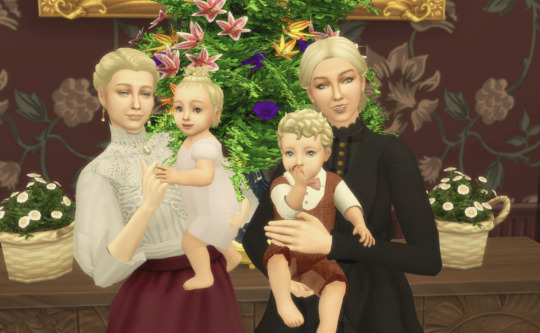
Twins with their grandmothers! (before I killed them 💀) (X)
August

Playing in the snow! (X)

I love the way he looks at baby Giselle (X)

1903 Mother of the Year Rebecca Walsh (X)

Alexander's first kiss aww (before he messed everything up) (X)
September

Byron's first kiss! #britishboardingschoolisthegayestplaceontheplanet (X)

Me when my parents say I can't propose to my sixteen-going-on-seventeen girlfriend when I am also seventeen (X)
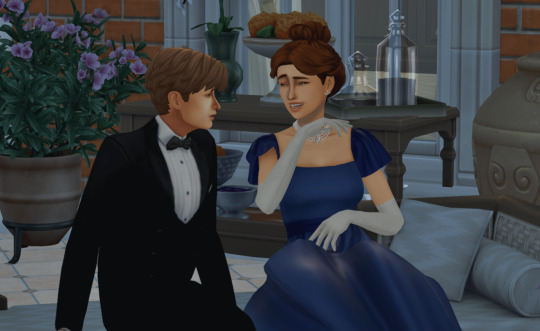
Loving the lighting here so much, I think it's my favorite shot of the 1900s... and my favorite so far (X)
October

this shot eats like the one eye kinda looking directly at the camera... yes (X)
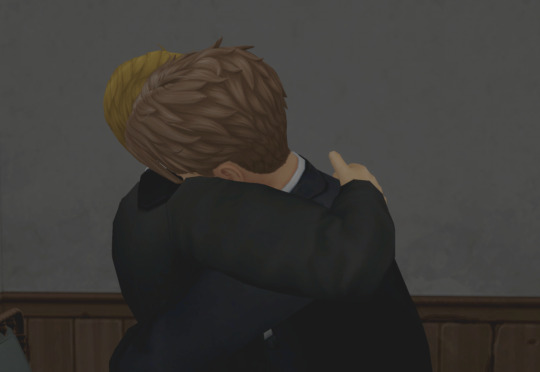
omg guess who's losing their virginity 🙀 (X)

just a couple of besties who totally don't develop feelings for each other wink wink (X)

golden hour at a funeral (X)

Montgomery and Edeline are married! (Scottish communist doctor x English medical student what could go wrong) (X)
November
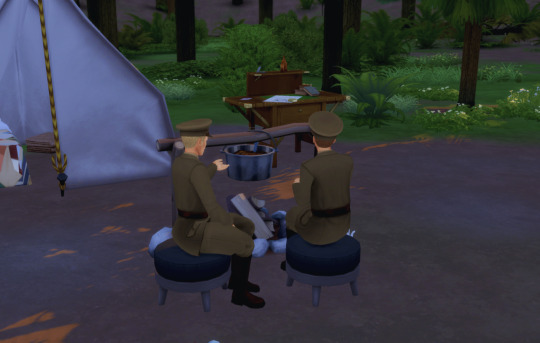
brothers in arms (both metaphorically and literally) (X)

This is my favorite shot of Alexander. :( (X)

queer walsh siblings let's go (X)

lets go lesbians lets go (X)
December

me when i'm brooding over fireplace (X)
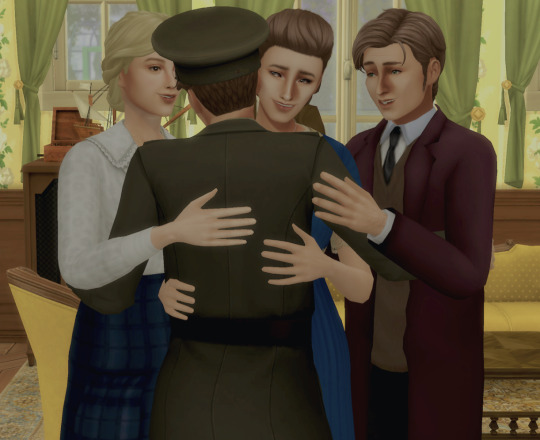
baby boy is home from war!!! (X)
BTW the next couple are from posts that will be posted within the next two weeks, but keeping them spoiler-free as I can <3 my actual favorite shot of 2023 I won't show y'all... y'all gotta wait until Christmas Day (it's for the 1920s)

Mrs. Edeline MacGregor looking quite gorgeous here

I love this shot
#tag game#simblr#honorable mention includes when rose died and she said i know what you are byron and then died queen#walsh legacy extras
12 notes
·
View notes
Text
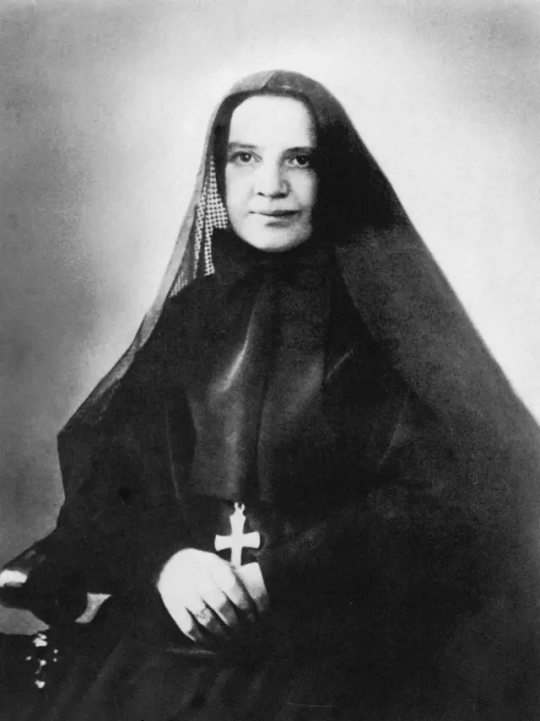
St Frances Xavier Cabrini
Mother Cabrini was born on July 15, 1850 in Sant'Angelo Lodigiano, Italy. Being enthralled by missionaries and their work she made up her mind to join a religious order. Because of her frail health Mother Cabrini was not able to join the Daughters of the Sacred Heart who had been her teachers and under whom she obtained a teaching certificate. However, in 1880 she along with seven young women founded the Missionary Sisters of the Sacred Heart of Jesus. She was resourceful managing to find people to donate their time, labor, and money to cover the needs of her order and its charitable acts. Mother Cabrini and her fellow sisters wanted to go to China as Missionaries but in an audience with Pope Leo XIII she was told "Not to go East but to go West." Mother Cabrini was to go to New York. She and several sisters emigrated to the United States leaving Italy on March 23, 1889 and arriving in New York City on March 31st. Mother Cabrini was to serve the Italian immigrants in New York where she was met with poverty and chaos. Despite tremendous odds Mother Cabrini and her sisters provided for the many needs of the Italian immigrants establishing schools and orphanages. Mother Cabrini arrived in Seattle (my home town) on 1903 exclaiming upon her arrival in the Northwest, "Here we are, not far from the North Pole." While in Seattle she worshipped at St. James Cathedral and she founded Cabrini Medical Tower only but a block away from the cathedral. Mother Cabrini would go on to found hospitals and schools throughout the world. Mother Cabrini died on December 22, 1917, in Chicago. Before her death Mother Cabrini became a United States citizen. In 1946, she became the first American citizen to be canonized. She was elevated to sainthood by Pope Pius XII.
Saint Mother Cabrini is the patron saint of immigrants. Her feast day is November 13.
6 notes
·
View notes
Text


Aino Ackté (1876-1944) was born at July 23. in Helsinki. She was a star in her time. At the Opéra national de Paris from 1897-1903. Then she made her debut at The Metropolitan Opera 1904 as Marguerite. Here we see a original Postcard from 1905 and the original castlist from her second evening at the MET.
#opera#classical music#music history#bel canto#composer#classical composer#aria#classical studies#classical singer#metropolitan opera#MET#Ackté#dramatic soprano#soprano#Covent Garden#Paris Opera#Conservatoire de Paris#classical singing#classical history#chest voice#diva#prima donna#maestro#historian of music#classical musician#classical musicians#musician#musicians#postcard#Aino Ackté
8 notes
·
View notes
Text
A Lost Chapter From Cincinnati’s Irish History: The Sad Saga Of Dublin Street
“If ugliness were a cardinal virtue, angels might abide in Dublin Street.” Cincinnati Commercial Tribune 21 July 1849
When the ghost of Ginger Ryan appeared one night in 1903, Dublin Street, long neglected and criminally abused, was already doomed. Ginger, or James, as he was known to the local priest, had worked as an express man when he was alive. He delivered things by horse-drawn wagon. When he wasn’t working, Ginger was fighting. Sometimes he got into brawls while he was working. Ginger Ryan was the very embodiment of Dublin Street, so it was no surprise when residents of that woebegone lane claimed they saw Ginger’s ghost wandering around in the chill October dusk. Ginger’s ghost never spoke and eventually ceased its nocturnal visits.
As the name suggests, Dublin Street was a gathering place for Cincinnati’s Irish population. The street offered shelter throughout the time when “No Irish Need Apply” signs decorated many Cincinnati storefronts. Barred from all but the most menial occupations, many Dublin Street residents turned to crime. The infamous Nuttle Gang, Irish through and through, congregated here. Descriptions were rarely inspiring. Here is the Enquirer [23 November 1877]:
“Dublin street is a sort of nickname given to a hole in the line of Lock street extended north. It is thickly studded with houses whose tops scarcely reach to the level of the streets now filled in around it. The houses are principally old, weather-beaten frames, with rickety stairs and fences and general squalor to correspond.”
Despite its unsavory reputation, Dublin Street remains one of Cincinnati’s mysteries. It was a street, but it was also an informal district. “Dublin Street” was a catch-all term for the area just east of Bucktown where the poor Irish lived. It is intriguing that Cincinnati’s city directories, which include lists of every street in the city, make no mention of Dublin Street. That absence might imply that Dublin Street had not been dedicated or officially accepted by the city, and yet as early as 1845 the city appropriated funds to grade and pave Dublin Street.
It was hardly worth the expense. Dublin Street proper was a narrow alley crammed into a ravine running from the intersection of Lock and Eighth streets to the intersection of Court Street and Gilbert Avenue. Don’t bother trying to find it on a map. The whole area has been bulldozed and covered with a web of highway ramps. As it extended northeasterly, Dublin Street also descended into Deer Creek Valley, the old “Bloody Run” once bathed by the effusions from slaughterhouses upstream. When it rained, Dublin Street became a cesspool. The Enquirer [24 May 1871] opined:
“The Board of Health would do well to visit Dublin street and Gilbert avenue. There is about four feet of filthy gutter-water standing in the street, and the residents have to dam it out of their houses.”
It is unlikely the Health Department took the newspaper’s advice. No one wanted to “visit” Dublin Street and those people forced to do so, such as officers of the court, barely escaped to tell the tale. The Cincinnati Times-Star [22 November 1911] recalled one episode:
“Court Officer John Thomas had his troubles on old Dublin street, too. He recalls a time when he was called upon to arrest a youth named Thorp on a charge of theft. The boy cried and in a moment the street was filled with excited men and women. Thomas had to hold the boy and fight the crowd back. Gradually he fought his way to Gilbert avenue and dragged the youth up the hill while sticks and stones were showered upon him.”

As the anecdote implies, the northern end of Dublin Street, where it met Gilbert Avenue, was a hill, made steeper by every improvement to Gilbert as the main route to tony Walnut Hills. Eventually, Dublin Street ended in an embankment that acted as a dam, pooling rainwater and sewage downhill from Gilbert’s finely paved thoroughfare. The Enquirer [31 May 1871] reports the effects of one storm:
“The water rose rapidly on Dublin street, flooding the floors of most of the houses on a level with the street to the depth of ten or twelve inches, and pouring in torrents down into the basements in the rear, which are used by the poor residents in this locality for kitchens and sleeping-rooms.”
A pioneering sociologist, Wallace E. Miller, reported on his inspection of Dublin Street, part of a comprehensive look at the city’s “tenement districts.” According to the Enquirer [15 March 1902]:
“This district,” says Prof. Miller, “is popularly known as ‘Dublin Street,’ partly because of the predominance there of people of Irish extraction. The ground is very low. The drainage is very poor, indeed. The street is never dry. The houses for the most part are frame buildings that are not kept up to the standard either of comfort or appearance. The surroundings are not conducive to health either in summer or winter.”
When Dublin Street residents appealed to the city for relief, they were met with undisguised scorn. After years of requests for some sort of attention, whether a set of stairs to climb up to Gilbert Avenue, or more capacious culverts to drain pooled floodwaters, Dublin Street residents asked for an embankment to keep the Gilbert Avenue hill from sliding into their back yards. City Councilman William E. Patterson even accused Dublin Street grocer Florence McCarthy of theft because he had rebuilt his house on stilts to avoid the flooding. According to the Enquirer [22 June 1890] Councilman Patterson laughed:
“McCarthy, you’re a robber. Here you shove up a house on sticks and then ask me to have the city slide a lot under it. You’re the first man I ever saw that would steal dirt. I’ll not vote for it.”
What the city eventually did vote for was a viaduct to connect the downtown to Gilbert Avenue. It took years to decide on the route and to condemn properties along the way, and to agree on the contractor, but every alternative concurred on one item: Dublin Street would be wiped from the map. The Cincinnati Commercial Tribune [17 July 1909] exposed the city’s ulterior motive:
“It has been decided to condemn all the property in Dublin street, although all of it is not needed. The part not needed will be used for a park or a playground, it is said.”
When Dublin Street disappeared, there was no record of anyone shedding a tear. There is, today, a park in the general vicinity of the old Dublin Street. It’s for dogs.
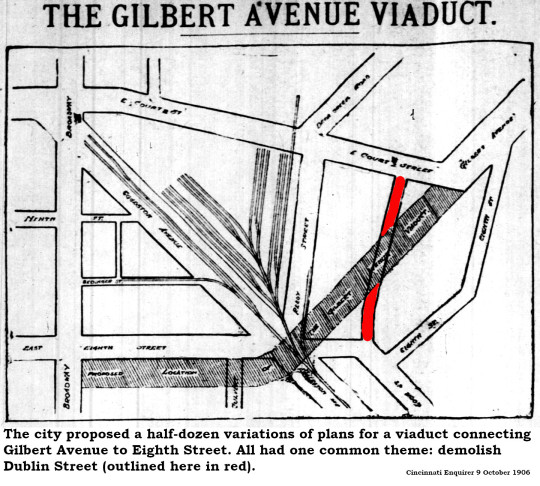
7 notes
·
View notes
Text
Helen Beatrix Potter (/ˈbiːətrɪks/BEE-ə-triks; 28 July 1866 – 22 December 1943) was an English writer, illustrator, natural scientist, and conservationist. She is best known for her children's books featuring animals, such as The Tale of Peter Rabbit, which was her first commercially published work in 1902. Her books, including 23 Tales, have sold more than 250 million copies. An entrepreneur, Potter was a pioneer of character merchandising. In 1903, Peter Rabbit was the first fictional character to be made into a patented stuffed toy, making him the oldest licensed character. via Wikeipdia
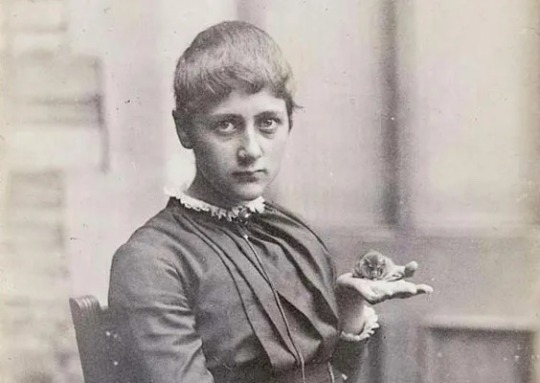
Teenage Beatrix Potter with her pet mouse Xarifa, 1885 (Princeton University Library, Rare Books and Special Collections) @abwwia
2K notes
·
View notes
Text
Black History Month: Day 02

So I finished drawing Mary Jane McLeod Bethune.
Mary Jane McLeod Bethune-She was born on July 10th in 1875.Maysville,South Carolina.To former slaves Patsy and Samuel McIntosh McLeod,she was the fifteenth out of 17 children.When she was a child,she would discover the value of education and unlike her parents and her almost all her siblings she was born free and she was formally educated at the Maysville School,a Presbyterian Mission School for African Americans.In 1886.Shortly after her graduation,she would continue her education on a scholarship at the Scotia Seminary for Girls in Concord,North Carolina. (Btw Scotia Seminary for Girls is now Barber-Scotia College) and upon graduation in 1894.She planned to become a Christian missionary in Africa,but after teaching and working among black people from South Carolina she realized that she needed to stay in the US so African Americans could get better education opportunities.In 1898.At the age of 23 Mary would get married Albertus Bethune but unfortunately their marriage wouldn't last long due to Albertus deserting the family in 1907.They had one son,Albert McLeod Bethune.Being a single mom and working as a teacher,Mary would teach in Georgia,South Carolina,Florida and Illinois between 1895. and 1903.Before eventually settling in Daytona,Florida.In 1904 she opened a high school, hospital and Daytona Normal and Industrial Institute for Girls (Fun fact:She opened the Daytona Normal and Industrial Institute for Girls with only $1.50, meanwhile today you can only dream of buying something that is $1.50.inflation is real-).The popularity of Daytona Normal led to merging with the Methodist-run Cookman Institute for Men in Jacksonville in 1923.And eventually becoming the Bethune-Cookman College (Today it's Bethune-Cookman University).Mary would serve as the merged college’s first president from 1923. to 1942. and again from 1946. to 1947.At the time she was one of the few female college presidents in the nation.While establishing crucial educational institutions Mary began decades of leadership among women’s groups when she was elected President of the Florida Federation of Colored Women in 1917.In 1924.She was elected president of the National Association of Colored Women (NACW) which was founded by St. Pierre-Ruffin in 1896.As NACW president she tried to steer it beyond traditional self-help and moral uplift toward the politics of agitation for integration by attacking racial discrimination and segregation in the Federal government.Frustrated by the difficulty of eliminating Jim Crow in the US government and the internal politics of the NACW.In 1935.Mary left the Association and founded a non-profit organization of African American women that had more explicit civil rights agenda (And it still runs today!).Mary's friendship with First Lady Eleanor Roosevelt was one of the reasons for the creation of the non-profit organization and that friendship would lead to Mary becoming a Director in the National Youth Administration.A post that she held from 1936. to 1943.And as a director,she led an organization that trained tens of thousands of Black youth for skilled positions that eventually became available in defence plants during WWII.Mary made sure Black colleges participated in the Civilian Pilot Training Program which graduated some of the nation’s first Black pilots.Through the NYA she became the most prominent African American in Pres. Franklin Roosevelt’s administration and because of her friendship with Mrs. Roosevelt,she would influence government policy in the 1930s.She was also the chair of the informal Black Cabinet of senior African American officials in the Roosevelt administration and Mary was instrumental in integrating the Red Cross,increasing public awareness of lynching,voter discrimination in federal elections,and segregation on interstate trains and buses.In 1949. President Harry S. Truman appointed her to lead the US delegation to Liberia to observe the inauguration of President William vs Tubman.In 1951.Mary served on President Truman’s Committee of Twelve for National Defense.
She died of a heart attack on May 18th In 1955.At the age of 79.Before she died,she would see The US Supreme Court strike down de jure school segregation in Brown v. Board of Education but she died seven months before the beginning of the Montgomery Bus Boycott which ushered in the modern Civil Rights Movement
One of her famous quotes were: 'We have a powerful potential in our youth,and we must have the courage to change old ideas and practices so that we may direct their power toward good ends.'
Credits for information: blackpast.org
Materials used:Soft pastel crayons,HB pencil,5B pencil and 8B pencil
See you soon guys! 💖💖💖
1 note
·
View note
Text


















The Ford Motor Company sold its first car on July 23, 1903.
#Ford Fairlane#Ford Mustang#Torrington#Wyoming#USA#travel#original photography#vacation#tourist attraction#landmark#architecture#cityscape#Ford Expedition#Torrington Cruise Night#Ford Explorer#Ford Escape#Canada#rental car#landscape#Ford Motor Company#first car#23 July 1903#120th anniversary#US history#technology#engineering
4 notes
·
View notes
Text

Kaneko Fumiko (金子 文子, Kaneko Fumiko, January 25, 1903 – July 23, 1926) or rarely Pak Fumiko and Pak Munja (Korean: 박문자; Hanja: 朴文子), was a Japanese anarchist and nihilist. She was convicted of plotting to assassinate members of the Japanese Imperial family. Via Wikipedia
0 notes
Link
Karl Rudolf Werner Best was a German jurist, police chief, SS-Obergruppenführer, Nazi Party leader, and theoretician from Darmstadt. He was the first chief of D...
Link: Werner Best
0 notes
Text
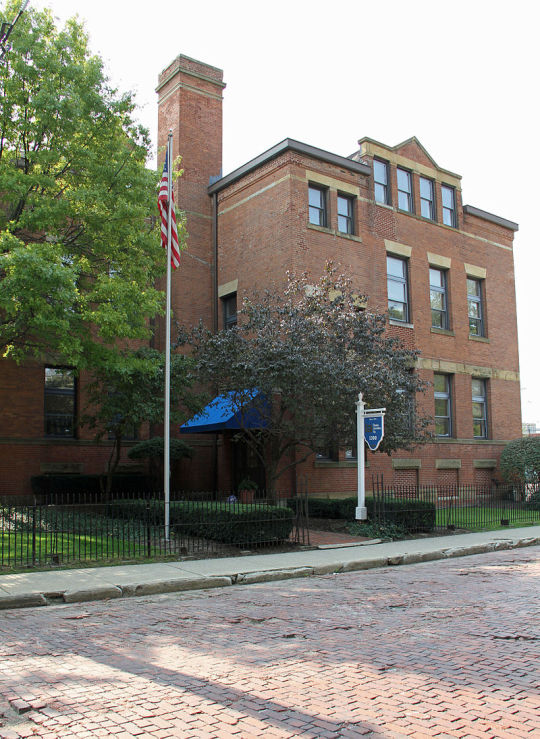
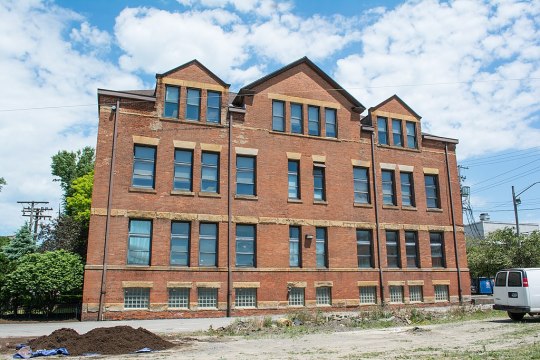
Brownell School and Annex
1300-1360 Sumner St.
Cleveland, OH
The Brownell School and Annex are three historic former public school buildings located on Sumner Street in Cleveland, Ohio. On July 30, 1850, the city of Cleveland purchased for $600 lot number 10 on Clinton Street (later known as Brownell Street, and still later as E. 14th Street). This 100-by-198-foot (known today as 2261 E. 14th Street) was purchased for the purpose of erecting a public school. Construction of a 44-by-46-foot, two-story brick structure began in the fall of 1851. Local builder John Gill constructed the school at a cost of $3,500. The school opened in January 1852. The Clinton School, as it was originally known, proved immensely popular with area residents. It became so overcrowded after just a single semester that in July 1852 the school board ordered that a third floor be added to the structure. This was built by Josiah Chase during the summer, at a cost of $175. A 24-by-60-foot, one-story wooden addition was added in 1856, again to alleviate overcrowding.
In May 1863, the Cleveland Board of Education determined that a new, larger school was needed to replace the 1851 structure. The city purchased lots 17, 18, and 19 on the southern corner of the intersection of Sumner Street and Brownell Avenue in September 1863. Noted local architect Simeon Porter designed the structure. With the American Civil War proving a drain on city finances, it was not until August 1864 that local builder Levi Aust was given a contract to build the new school. The 25-room brick grammar school, was completed in May 1865. It was named the Brownell Street School. The original school and its addition were demolished in 1865, and the original lot sold.
By at least 1874, the structure's name had been shortened to "Brownell School." With Cleveland's population rising rapidly, the Brownell School once more became overcrowded. Six temporary buildings had been moved onto the Brownell Street School lot or erected there by 1880, and two rooms rented in a nearby church, to provide room for the expanded student population. Rapidly expanding student populations led the Cleveland Board of Education to approve construction of a large annex to the Brownell School in December 1883. Two lots (22 and 23), totaling 88 by 121 feet, were purchased for $3,048. Temporary school structures, recently condemned by the Cleveland Health Board, were demolished. A two-story, eight room building in the Queen Anne architectural style, designed by prominent local architect John Eisenmann, was built beginning in 1884. This $19,397 edifice was nearing completion in March 1885, and opened in September 1885. This annex was known as the Sumner School, or "Brownell Relief" building.
In January 1903, the Board of Education approved the construction of a six-room annex building for the Brownell School. The land, constituting the remainder of the block, was purchased in 1903, at a cost of about $3,000. Prominent local architect Frank Seymour Barnum, who had served as the school district's staff architect since 1895, designed the structure. Although only six rooms, each of the rooms was 35 percent larger than in the other buildings. The structure cost $29,561 for a total cost (building, land, and improvements) of $33,475. This first annex designed by Barnum was completed in 1905. The 1905 building proved only to be a stop-gap measure. In June 1908, the school district approved construction of a new wing, to cost $10,000, to connect the Brownell and Sumner schools. The work included adding a third floor (containing an auditorium) to the Sumner School, and building a 19-by-39-foot pool in the basement of the addition. Also designed by Barnum, construction began in November 1908 with general contractor D.C. Griese and Walker overseeing the work. The connecting wing opened in mid-March 1909.
By 1909, Brownell School was one of the most advanced in the city. It was believed to be one of the first schools in the United States to have a swimming pool, and was the first in Cleveland to do so. It was the first Cleveland school to own a movie projector, the first to own a phonograph, the first to offer kindergarten, and one of the earliest to offer bilingual education. According to the United States Bureau of the Census, the school was the most ethnically diverse in the nation, with 41 nationalities represented among its 1,436 pupils. Changing demographics led the school board to transform Brownell from an elementary school to a junior high school in 1918.
In February 1930, the decrepit 1884 Brownell School (the "second school") was demolished and is now a parking lot. Beginning in 1933, a rapidly declining school-age population in the neighborhood led the Cleveland Board of Education to propose that Brownell School be closed. Construction of the Cedar-Central Apartments, erected in 1937 one of the first three public housing projects in the nation, gave brought new students to Brownell and prevented its closure for a time. Calls for the school to close were still made repeatedly over the next 25 years. However, every proposal was met with strong resistance by residents who called Brownell "possibly Cleveland's most historic school." Several individuals of local and national importance were educated there or taught school there. After attendance dropped by more than half (to under 200) in the spring of 1958, the Cleveland Board of Education announced the school's permanent closure in June 1958. The Board of Education initially attempted to sell the buildings. The building served as the first campus of Cuyahoga Community (Tri-C) College in 1962. The interior of the Brownell School was heavily remodeled over the next nine months, and Tri-C opened its doors on September 23, 1963. Tri-Co occupied the Brownell School (and other buildings) until the fall of 1968.
A few Tri-C administrative offices remained in the Brownell School until 1973. The building was sold to private owners in January 1979, when the Cleveland Postal Employees Credit Union successfully bid $145,000 for the structure, placing it in private hands. The Brownell School complex changed hands a second time in 1983, when local Irrigation Supply Inc. president Dave Vanderwist and his investment partners acquired the property, and the complex underwent a major renovation from 1983 to 1985. The exterior of all three building underwent abrasive blasting to clean them, and the interiors were heavily remodeled into office space. The school's basement gymnasium was converted into a racquetball/handball court, and the showers and steam room updated. A small fitness center was added as well. The school's auditorium was renovated into open plan office space (first used by a law firm), and the building skylight repaired and reopened. The buildings are a contributing property to the Lower Prospect-Huron Historic District, which was added to the National Register of Historic Places on November 19, 1995. The Brownell School buildings themselves were added to the National Register on February 1, 2006.
0 notes
Text
It’s weird that a Jew from Santa Monica, CA, whose grandparents were saved by emigrating to the US (“His mother's ancestors—Wolf Lieb Glotzer and his wife, Bessie—emigrated to the United States from the Russian Empire's Antopol, in what is present-day Belarus, arriving in New York on January 7, 1903, on the German ship S.S. Moltke,[21] thus escaping the 1903–06 anti-Jewish pogroms in Belarus and other parts of the Russian Empire.[22][23][24] When his great-grandmother arrived in the U.S. in 1906, she spoke only Yiddish, the historical language of the Ashkenazi Jews of Eastern Europe.[25]” ) is so staunchly anti-immigrant. He’s a conceited know-it-all certain that only he has the answers. He is most likely deeply insecure and over compensates by being exceptionally abrasive. Just like 99% of Trumpers. Deeply insecure, afraid of anything different, determined to take and keep whatever they can with no regard for anyone they deem inferior. Unfit to call themselves citizens of the “land of the free and home of the brave.”
0 notes